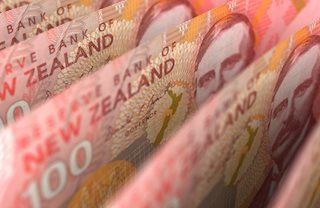NZD/USD moves higher near 0.6020 as PBoC keeps LPR unchanged
|
- NZD/USD extends gains above 0.6000 on China’s interest rates decision.
- Kiwi PPI data raises questions about whether the window for a rate hike is closed.
- PBoC kept benchmark rates unchanged at 3.45%.
NZD/USD receives upward support following China's interest rate decision. The People's Bank of China (PBoC) has opted to keep its loan prime rate (LPR) unchanged at 3.45%, in line with expectations. The NZD/USD pair trades higher around 0.6020 during the Asian session on Monday, extending the gains for the second successive session.
While the market leans towards a slowdown in inflation, it appears the Reserve Bank of New Zealand (RBNZ) holds a different view. There's a belief that risks still tilt towards the RBNZ having to hike again in the coming year. The RBNZ faces challenges in its November policy meeting, considering the recent weaker data; striking a balance to avoid signaling aggressive rate cuts while acknowledging economic conditions will be crucial.
New Zealand's Producer Price Index (PPI) – Output for the third quarter, rose to 0.8% from the previous reading of 0.2%. The data suggests that the previously expected Q4 inflation may not materialize. This raises questions about whether the window for a hike is closing as evidence of the lagged impact of monetary policy, particularly on the labor market, becomes apparent.
US Dollar Index (DXY) continues to lose ground, bidding around 103.70 at the time of writing, with a negative bias on US bond yields. The yield on the 10-year Treasury note hovers around 4.45% by the press time.
US Dollar (USD) experienced downward pressure despite positive US housing data on Friday. Building Permits (MoM) surpassed market expectations at 1.487M for October, exceeding the consensus of 1.450M. Additionally, Housing Starts (MoM) increased to 1.372M, up from the previous figure of 1.346M.
United States (US) reported soft inflation figures and weak economic activity. The market interpreted signs of inflationary pressures and a cooling labor market as indications that the Federal Reserve (Fed) might have completed its hiking cycle, resulting in the weakening of the US Dollar (USD) throughout the previous week.
With a gap until the November labor data in December, the focus this week will be on the FOMC minutes, offering insights into the committee's decision to hold rates. Fed speakers are subtly pushing back against early rate cut expectations for next year.
Information on these pages contains forward-looking statements that involve risks and uncertainties. Markets and instruments profiled on this page are for informational purposes only and should not in any way come across as a recommendation to buy or sell in these assets. You should do your own thorough research before making any investment decisions. FXStreet does not in any way guarantee that this information is free from mistakes, errors, or material misstatements. It also does not guarantee that this information is of a timely nature. Investing in Open Markets involves a great deal of risk, including the loss of all or a portion of your investment, as well as emotional distress. All risks, losses and costs associated with investing, including total loss of principal, are your responsibility. The views and opinions expressed in this article are those of the authors and do not necessarily reflect the official policy or position of FXStreet nor its advertisers.





